Industrial coal-fired boilers are widely used in power generation, metallurgy, textiles, and chemical industries due to their fuel availability, cost-effectiveness, and scalability. However, while coal remains a low-cost fuel option, these systems often come with complex infrastructure requirements, regulatory challenges, and high maintenance demands. Evaluating only the upfront cost can lead to unexpected expenses in the long run—making it crucial to assess both capital and lifecycle costs when planning a purchase.
The upfront costs of an industrial coal-fired boiler include equipment price, construction and installation, fuel handling systems, ash management, and environmental compliance technologies. Long-term costs encompass fuel expenditure, emissions control, regular maintenance, spare parts, operator training, and potential carbon penalties. Over a lifespan of 20–30 years, operational and regulatory costs can far outweigh the initial investment, especially with tightening environmental regulations. Therefore, a full cost analysis is essential to determine total cost of ownership (TCO).
Here’s how the cost structure breaks down in both the short and long term.

What Are the Typical Upfront Costs for Purchasing and Installing a Coal-Fired Boiler System?
Investing in a coal-fired boiler system is a significant capital decision, particularly for industrial plants or energy-intensive facilities. These systems are large, complex, and require extensive support infrastructure such as fuel storage and handling, ash disposal systems, emission control units, and water treatment facilities. As a result, the upfront cost of purchasing and installing a coal-fired boiler is typically much higher than oil- or gas-fired alternatives. Understanding these cost components helps project developers, engineers, and procurement teams budget accurately and assess feasibility.
The typical upfront costs for purchasing and installing a coal-fired boiler system range from $2 million to over $10 million depending on capacity, pressure rating, environmental controls, and site-specific requirements. These costs include the boiler unit, coal handling system, ash handling, flue gas treatment, water treatment, piping, instrumentation, and civil construction. For a mid-size 10–50 TPH coal boiler, expect costs between $3.5 million and $7 million. Large-scale power plant systems or high-pressure utility boilers may exceed $20 million when all auxiliary systems are included.
Coal-fired boiler projects demand detailed engineering, regulatory compliance, and infrastructure investment—which must all be reflected in capital planning.
The upfront cost of a coal-fired boiler includes more than just the boiler unit—it covers fuel handling, ash disposal, emission control, and civil construction.True
These auxiliary systems are essential for safe, efficient, and compliant operation, often doubling or tripling the cost of the boiler unit alone.
🧱 Typical Cost Breakdown for a Coal-Fired Boiler Installation
| Component/Service | Cost Range (USD) | Share of Total Capex (%) |
|---|---|---|
| Boiler Unit + Burner | $1,200,000 – $3,500,000 | 25–35% |
| Coal Handling System | $300,000 – $1,200,000 | 10–15% |
| Ash Handling System | $200,000 – $800,000 | 5–10% |
| Flue Gas Desulfurization (FGD) | $500,000 – $2,000,000 | 10–20% |
| Electrostatic Precipitator (ESP) | $400,000 – $1,500,000 | 8–12% |
| Water Treatment Plant | $300,000 – $900,000 | 5–10% |
| Control & Instrumentation (PLC/SCADA) | $250,000 – $800,000 | 5–8% |
| Piping, Valves, Ducting | $200,000 – $700,000 | 3–7% |
| Civil Construction & Foundations | $500,000 – $2,000,000 | 10–20% |
| Installation Labor & Testing | $300,000 – $1,500,000 | 7–15% |
Total Estimated Upfront Cost Range: $2 million to $10+ million
(Varies with boiler size: 5–100+ TPH)
📉 Cost by Boiler Capacity
| Boiler Capacity (TPH) | Pressure (bar) | Installed Cost Estimate (USD) |
|---|---|---|
| 5 TPH | 10–25 bar | $2.2 – $3.8 million |
| 10 TPH | 25–40 bar | $3.5 – $5.0 million |
| 25 TPH | 40–60 bar | $6.0 – $8.5 million |
| 50 TPH | 60–80 bar | $8.0 – $12 million |
| 100 TPH+ | 100 bar+ | $15 – $25+ million |
Utility-scale projects often include multiple boilers, turbines, and power generation infrastructure, significantly raising capital costs.
High-capacity coal boilers require substantial auxiliary infrastructure, making them more expensive to install than other boiler types.True
Coal systems need coal and ash handling, flue gas treatment, and emissions controls that are not needed in simpler fuel systems.
🔧 Key Factors That Influence Capital Cost
| Factor | Description | Cost Impact |
|---|---|---|
| Boiler Output (TPH or MW) | Higher output = larger and more complex system | Major |
| Emission Control Requirements | FGD, ESP, baghouses required by law | Major |
| Fuel Type (e.g. lignite vs. bituminous) | Affects burner and handling design | Moderate |
| Automation and Monitoring Level | PLC, SCADA, DCS integration | Moderate |
| Water Quality and Source | Affects treatment system size | Moderate |
| Site Conditions (greenfield vs. retrofit) | Civil, access, foundations | High (for retrofit) |
🧪 Case Study: 25 TPH Coal Boiler Project in Southeast Asia
Scope:
25 TPH coal-fired boiler at 40 bar
Bituminous coal fuel
Includes ESP, basic water treatment, PLC control
Moderate emission regulation compliance
Breakdown:
Boiler + Burner: $2.1 million
Coal & Ash Handling: $1.1 million
ESP + Stack: $1.3 million
Water Treatment + Piping: $0.9 million
Civil Works + Labor: $1.2 million
Total Installed Cost: $6.6 million
Payback from fuel savings vs. oil: ~3.7 years
Coal-fired boiler systems offer cost savings in fuel but require higher upfront investment than gas or oil-fired systems.True
While coal fuel is cheaper, the installation is costlier due to environmental and infrastructure requirements.
📋 Additional Considerations in Budgeting
| Item | Estimated Cost or Range | Why It Matters |
|---|---|---|
| Project Engineering & Design | $150,000 – $750,000 | Essential for proper sizing and layout |
| Permitting & Environmental Studies | $50,000 – $250,000 | Required for emissions and construction |
| Operator Training | $20,000 – $100,000 | Critical for safe and efficient use |
| Spare Parts Inventory | 2–5% of capex | Prevents extended downtime |
| Contingency | 5–15% of project cost | Accounts for overruns and design changes |
Summary
The upfront cost of a coal-fired boiler system is significantly higher than other fuel types due to the scale, complexity, and regulatory compliance required. A complete system includes not just the boiler, but fuel handling, ash disposal, emissions controls, and civil works—often more than doubling the base equipment cost. While coal may offer lower fuel costs over time, the initial capital investment ranges from $2 million to over $10 million. For industrial operations seeking fuel flexibility and long-term savings, this investment can pay off—but only with thorough planning, efficient design, and disciplined project execution.
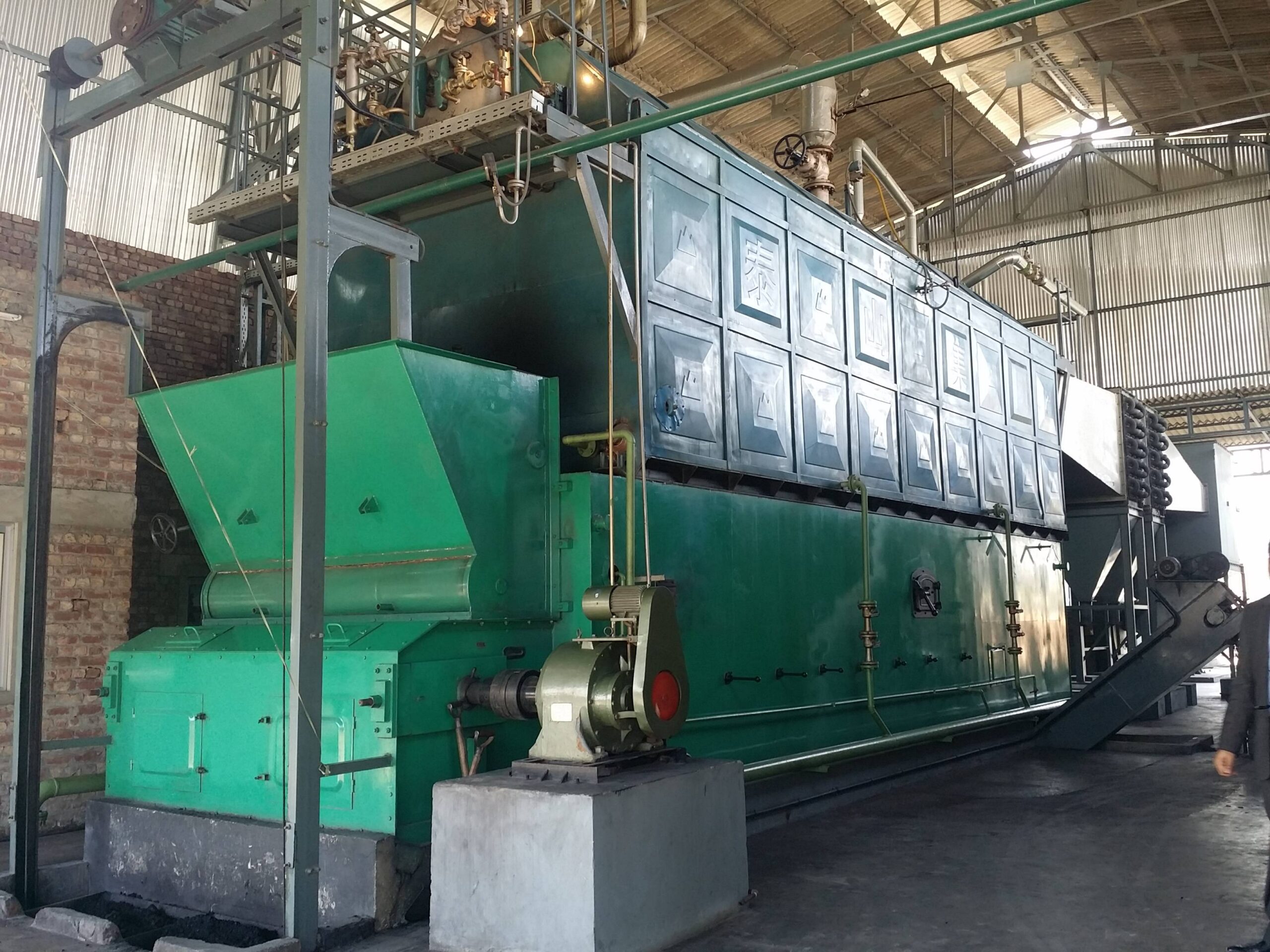
How Do Fuel Handling, Ash Removal, and Flue Gas Treatment Systems Add to Capital Cost?
Coal-fired boiler systems are complex thermal plants that require more than just a combustion unit. To ensure efficient, clean, and safe operation, they must be equipped with robust fuel handling infrastructure, ash disposal mechanisms, and emission control systems. These auxiliary systems are essential but significantly increase the capital cost of the overall installation. In many cases, they represent more than half of the total investment, particularly when strict environmental regulations are in place. Understanding their cost implications is crucial for accurate budgeting and project planning.
Fuel handling, ash removal, and flue gas treatment systems add substantially to the capital cost of coal-fired boiler systems because they require large, custom-engineered infrastructure, mechanical equipment, and environmental controls. Fuel handling systems include conveyors, crushers, bunkers, and feeders. Ash removal systems manage hot and abrasive byproducts from the combustion chamber. Flue gas treatment systems such as electrostatic precipitators (ESP), flue gas desulfurization (FGD), and baghouses are often legally required. Together, these systems can account for 40% to 60% of total capital costs.
In coal boiler projects, supporting systems cost as much as—if not more than—the boiler itself.
Fuel handling, ash removal, and flue gas treatment systems significantly increase the capital investment required for coal-fired boiler systems.True
These systems are essential for fuel delivery, emission control, and waste management, and they often cost more than the core boiler unit.
🔧 Cost Contribution of Key Auxiliary Systems
| System Component | Typical Cost Range (USD) | Share of Total Capital Cost (%) |
|---|---|---|
| Fuel Handling System | $300,000 – $1,500,000 | 10–15% |
| Ash Removal System | $200,000 – $1,000,000 | 5–10% |
| Electrostatic Precipitator (ESP) | $400,000 – $2,000,000 | 10–20% |
| Flue Gas Desulfurization (FGD) | $600,000 – $3,000,000 | 10–25% |
| Baghouse Filters / Scrubbers | $300,000 – $1,500,000 | 5–15% |
| Chimney/Stack System | $200,000 – $1,200,000 | 3–7% |
Combined, these systems may add $1.5 million to over $6 million to a typical mid-sized industrial coal-fired boiler installation.
📉 Breakdown of Auxiliary System Cost Impact
| Component | Mid-Size Boiler (10–25 TPH) | Large Boiler (50+ TPH) |
|---|---|---|
| Core Boiler Unit | $2.0 – $3.5 million | $4.5 – $7 million |
| Auxiliary Systems | $3.0 – $5.5 million | $6.0 – $12+ million |
| Total System Installed | $5.0 – $9.0 million | $10.5 – $19+ million |
Auxiliary systems often cost more than the boiler unit in a complete coal-fired installation.True
Their role in emissions, fuel logistics, and ash management makes them large-scale engineered systems with substantial capital impact.
🔄 Detailed Cost Impact by Function
🪨 1. Fuel Handling System
Includes:
Coal crushers
Storage bunkers
Conveyors (belt/screw)
Feeders and chutes
Dust suppression systems
Typical Cost Range: $300,000 – $1.5 million
Why it adds cost: Requires robust construction, layout design, and fire prevention measures.
⚫ 2. Ash Removal System
Includes:
Bottom ash hoppers
Submerged drag chain conveyors
Fly ash silos and transport
Vacuum or pneumatic ash systems
Typical Cost Range: $200,000 – $1 million
Why it adds cost: Handles abrasive, high-temperature residue that requires heat- and wear-resistant materials.
🌫 3. Flue Gas Treatment System
Includes:
Electrostatic precipitators (ESP)
FGD (wet/dry scrubbers)
Baghouse filters
NOₓ control systems (SNCR/SCR)
Stack and draft fans
Typical Cost Range: $1 million – $6 million+
Why it adds cost: Required to comply with strict air pollution control laws; high-tech systems with complex integration.
🧪 Case Study: 20 TPH Coal-Fired Boiler with Full Auxiliaries
Installed in Eastern Europe for district heating application
Boiler Unit: $2.6 million
Fuel Handling: $850,000
ESP System: $1.3 million
FGD Scrubber: $1.9 million
Ash Handling: $700,000
Piping + Installation: $900,000
Control + Integration: $400,000
Total Installed Cost: $8.65 million
Auxiliaries accounted for ~70% of total cost, driven by strict EU emissions compliance.
📋 Regulatory and Design Drivers That Affect Cost
| Factor | Description | Capital Cost Effect |
|---|---|---|
| Emission Limits (SO₂, NOₓ, PM) | Determines FGD, ESP, and SCR system size | Major |
| Boiler Size and Fuel Type | Higher TPH and low-grade coal = more ash | High |
| Local Ash Disposal Regulations | Affects need for silo storage or landfills | Moderate |
| Automation Requirements | PLC and monitoring for all auxiliary systems | Moderate |
| Site Conditions | Space for conveyors and stack equipment | High (especially in retrofits) |
Summary
Fuel handling, ash removal, and flue gas treatment systems are essential and cost-intensive components of any coal-fired boiler installation. They ensure the safe, clean, and efficient transport, combustion, and disposal of coal and its byproducts. While the boiler itself might be the central unit, these supporting systems can double or triple the total installed cost, especially under stringent environmental regulations. For project developers and engineers, including these auxiliary costs in the initial budget is not optional—it’s fundamental to successful planning and implementation.
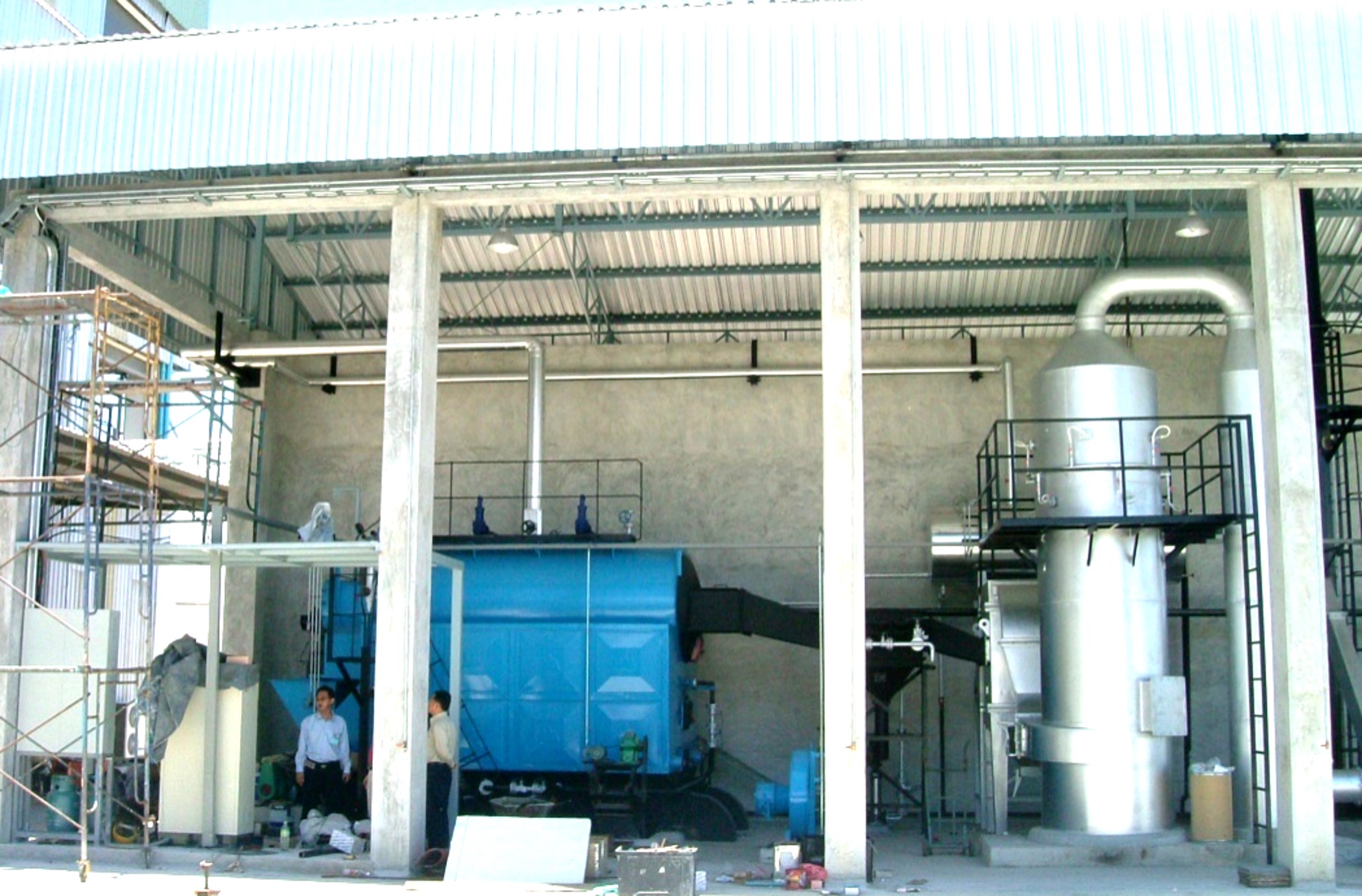
What Are the Recurring Fuel and Operational Expenses Over the Boiler’s Lifecycle?
When evaluating a boiler system’s true cost, it’s critical to look beyond the upfront capital investment. Over the 15–30 year lifespan of a coal-fired boiler, the majority of expenses come from recurring fuel and operational costs. These costs accumulate every day the system is running—impacting your profit margin, emissions output, and total cost of ownership. Whether your system is large or small, understanding the annual and cumulative fuel, labor, maintenance, and water treatment costs is key to accurate financial planning.
Recurring fuel and operational expenses over a coal-fired boiler’s lifecycle include fuel procurement, ash handling, maintenance, water treatment, labor, emissions compliance, and auxiliary power usage. Fuel alone typically accounts for 70% to 90% of total lifecycle operating costs. Other ongoing expenses—such as operator wages, chemical dosing, spare parts, soot blowing, and environmental monitoring—can make up 10% to 30% of annual operating budgets. Over 20 years, these recurring costs often exceed the boiler’s original purchase and installation price by 5 to 10 times.
Your fuel and operations plan is not just about cost—it determines the long-term economic viability of your system.
Recurring operating costs over a boiler’s life far exceed the initial capital cost.True
Fuel, labor, maintenance, water treatment, and compliance expenses accumulate continuously and dominate lifecycle cost.
🔁 Primary Categories of Recurring Costs
| Cost Category | Description |
|---|---|
| Fuel | Coal purchase, delivery, and storage |
| Ash Handling | Collection, transport, and disposal of bottom and fly ash |
| Maintenance & Repairs | Soot blowing, descaling, part replacement, pump/burner upkeep |
| Water Treatment | Softening, demineralization, chemical dosing, blowdown losses |
| Labor & Supervision | Boiler operators, maintenance staff, training |
| Emissions Compliance | Monitoring, flue gas analyzers, FGD reagent, dust collector upkeep |
| Auxiliary Electricity | For fans, conveyors, pumps, controls |
| Insurance/Permits | Legal compliance, certifications, and risk management |
📊 Lifecycle Operating Expense Estimates (20-Year Operation, 25 TPH Coal Boiler)
| Cost Component | Annual Cost Estimate (USD) | 20-Year Total (USD) | % of Lifecycle Cost |
|---|---|---|---|
| Fuel (Coal) | $1.6 – $2.2 million | $32 – $44 million | 70–85% |
| Maintenance | $90,000 – $150,000 | $1.8 – $3.0 million | 4–6% |
| Labor | $100,000 – $180,000 | $2.0 – $3.6 million | 5–8% |
| Water Treatment | $60,000 – $100,000 | $1.2 – $2.0 million | 3–5% |
| Ash Disposal | $50,000 – $120,000 | $1.0 – $2.4 million | 2–4% |
| Emission Control (FGD/ESP) | $80,000 – $200,000 | $1.6 – $4.0 million | 4–8% |
| Electricity (Auxiliary Load) | $40,000 – $70,000 | $0.8 – $1.4 million | 2–3% |
| Others (insurance, training) | $20,000 – $40,000 | $0.4 – $0.8 million | 1–2% |
| Total Lifecycle OPEX | — | $40 – $61 million | 5–10× capital cost |
Fuel costs are the dominant recurring expense in coal boiler operation.True
Fuel accounts for more than 70% of annual and total operating expenses, dwarfing other categories.
🪨 Fuel Costs: The Dominant Factor
| Parameter | Example Value |
|---|---|
| Boiler Capacity | 25 TPH |
| Efficiency | 82% |
| Operating Hours/Year | 6,000 |
| Coal Consumption | ~13,000–15,000 tons/year |
| Coal Price (delivered) | $120 – $160 per ton |
| Annual Fuel Cost | $1.56 – $2.4 million |
Fluctuations in coal market prices, transport logistics, or boiler efficiency can shift costs by hundreds of thousands per year.
🧪 Case Study: Cement Plant Boiler Lifecycle Cost
Setup:
20 TPH boiler
20 years planned life
Operates 5,800 hrs/year
Uses bituminous coal at $135/ton
Results:
Total coal used: 265,000 tons
Fuel cost: ~$35.7 million
Other O&M: ~$5.3 million
Total lifecycle operating cost: ~$41 million
Capex for system: $6.2 million
OPEX is over 6.6× the initial capital investment
Total operating cost of a coal boiler system can be five to ten times the capital cost over its lifetime.True
Recurring fuel and service needs drive long-term costs far beyond initial installation expenses.
📋 How to Minimize Recurring Operating Costs
| Optimization Action | Annual Savings Potential (%) |
|---|---|
| Improve Combustion Tuning | 5–8% fuel savings |
| Install Economizer | 4–7% fuel savings |
| Automate Blowdown System | 3–5% water and chemical savings |
| Recover Condensate | 5–10% water and energy savings |
| Implement Predictive Maintenance | 15–25% less unplanned repair costs |
| Use PLC/SCADA Monitoring | Reduces labor and improves efficiency |
Regular monitoring and optimization can contain and reduce long-term operational expenses by thousands to hundreds of thousands per year.
Summary
The true cost of operating a coal-fired boiler lies not in its installation, but in its daily and yearly consumption of fuel, labor, and maintenance resources. Over a 20-year span, the recurring expenses can add up to 5 to 10 times the system’s purchase price, with fuel representing the lion’s share of the burden. Controlling these costs through efficient operation, proper maintenance, and automation is key to maximizing your return on investment. In boiler systems, your lifecycle cost is determined not by what you spend once—but by what you spend every single day.
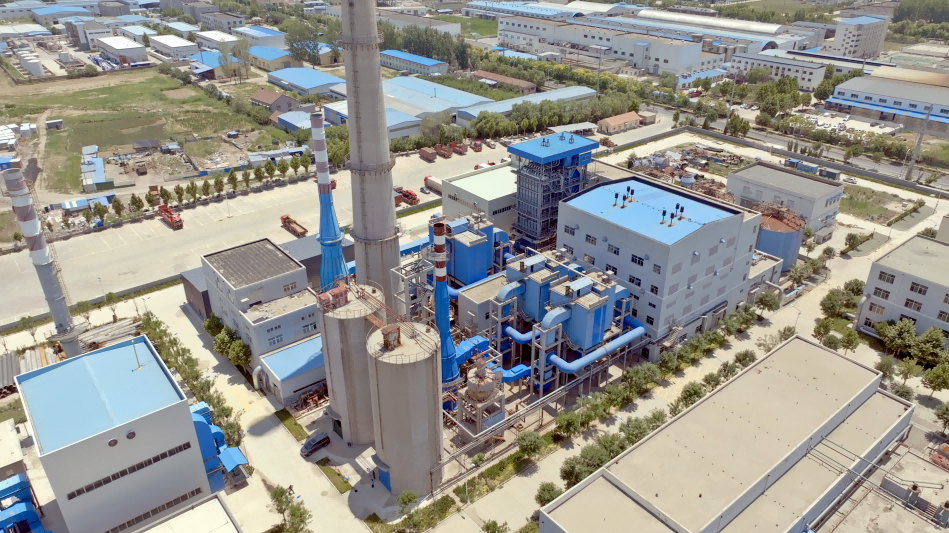
How Do Emissions Regulations and Carbon Taxes Affect Long-Term Operating Costs?
For coal-fired boiler operators, emissions are no longer just an environmental concern—they are a significant financial liability. With the global push toward decarbonization, emissions regulations and carbon pricing mechanisms such as carbon taxes or cap-and-trade programs are reshaping the economics of thermal energy production. These policies add direct costs per ton of emitted CO₂ and impose mandatory installation of emissions control technologies, both of which raise the long-term operating expenses of coal boiler systems.
Emissions regulations and carbon taxes increase long-term operating costs by requiring pollution control technologies, compliance monitoring, and financial penalties for CO₂ emissions. Stricter limits on particulate matter, sulfur dioxide (SO₂), nitrogen oxides (NOx), and greenhouse gases lead to higher costs for flue gas treatment systems such as ESPs, scrubbers, and selective catalytic reduction (SCR). Carbon taxes directly charge for CO₂ emissions per ton, increasing annual fuel-related costs by 10–30% or more depending on boiler efficiency and fuel carbon content. Over a 20-year period, these costs can exceed millions of dollars, transforming compliance from a choice into a business-critical investment.
In the age of carbon regulation, your emissions footprint is also your financial footprint.
Carbon taxes and emissions regulations substantially increase the lifecycle operating costs of coal-fired boiler systems.True
They require costly control systems, monitoring, and recurring payments tied to fuel carbon content and pollutant output.
🌫 Key Emissions and Their Cost Implications
| Pollutant | Source in Combustion | Regulatory Control System Required | Financial Impact |
|---|---|---|---|
| CO₂ (carbon dioxide) | Coal carbon content | Carbon tax, offset purchase | Adds cost per ton of fuel burned |
| SO₂ (sulfur dioxide) | Sulfur in coal | Flue Gas Desulfurization (FGD) | High capital and reagent costs |
| NOₓ (nitrogen oxides) | High combustion temps | Low-NOx burners, SCR, SNCR | Equipment + ammonia injection costs |
| Particulate Matter (PM) | Ash particles | Electrostatic Precipitator (ESP), baghouse | Ongoing filter maintenance and upgrades |
💰 Example: Carbon Tax Cost Impact
| Parameter | Value |
|---|---|
| Boiler Capacity | 25 TPH |
| Annual Operating Hours | 6,000 |
| Fuel: Bituminous Coal | 25,000 tons/year (~2.4 tons CO₂/ton) |
| Annual CO₂ Emissions | ~60,000 tons |
| Carbon Tax Rate | $30 – $70 per ton CO₂ |
| Annual Carbon Tax Cost | $1.8 – $4.2 million |
Carbon taxes directly penalize fossil fuel usage by assigning a cost to every ton of CO₂ emitted.True
This cost adds to annual operating expenses and can dramatically affect fuel choice and boiler economics.
📊 Lifecycle Impact of Emissions Regulations
| Category | Compliance Cost Range (20 Years) | Description |
|---|---|---|
| Carbon Tax (CO₂) | $30 – $90 million | Based on emissions volume and tax rate |
| SO₂ Scrubber O&M | $4 – $8 million | FGD equipment maintenance + lime/lime stone cost |
| ESP Maintenance | $2 – $4 million | Dust collector replacement and cleaning |
| NOₓ Control (SCR/SNCR) | $3 – $6 million | Ammonia or urea dosing and catalyst replacement |
| Emissions Monitoring | $500,000 – $1.5 million | CEMS (Continuous Emissions Monitoring Systems) |
These costs are recurring and cumulative, growing as environmental rules become stricter over time.
🧪 Case Study: 20 TPH Coal Boiler in a Carbon Tax Region
Setup:
Bituminous coal boiler
Annual CO₂ emissions: 52,000 tons
Carbon tax: $45/ton
Installed FGD + ESP + SNCR
Annual Costs:
Carbon Tax: $2.34 million
Reagents (lime/ammonia): $220,000
Emissions Equipment Maintenance: $180,000
Monitoring/Reporting: $75,000
Total Annual Emissions Cost: $2.8+ million
Over 20 Years: ~$56 million in emissions-related expenses
This cost is comparable to or greater than fuel cost, altering the economic viability of coal-based energy.
Emissions control and taxation can double the operating cost of coal-fired boiler systems over time.True
When accounting for carbon taxes and environmental compliance, emissions become one of the largest cost drivers.
📋 Strategies to Mitigate Emissions Cost Impact
| Strategy | Description | Cost Benefit |
|---|---|---|
| Fuel Switching (to biomass, low-sulfur coal) | Reduces SO₂ and CO₂ output | Lowers carbon and scrubber tax burden |
| Efficiency Upgrades | Improves combustion, lowers CO₂ per output unit | Reduces taxed emissions |
| Carbon Capture and Storage (CCS) | High-cost, emerging technology | Offsets some tax exposure long-term |
| Energy Recovery Systems | Improves heat utilization, lowers fuel demand | Less fuel burned = fewer emissions |
| Blending with RDF or Biofuel | Reduces fossil fuel fraction | May lower effective emissions tax |
A long-term emissions strategy must be technical, financial, and regulatory all at once.
Summary
Emissions regulations and carbon taxes represent a major shift in the economics of coal-fired boiler systems. While the systems themselves are capital intensive, it is the long-term cost of carbon and pollutant compliance that increasingly determines feasibility and profitability. With CO₂ taxed per ton and other pollutants requiring multi-million-dollar control systems, emission-related costs can double total operating expenses over 20–30 years. For operators, compliance is no longer optional—and emissions have become a business-critical cost center.
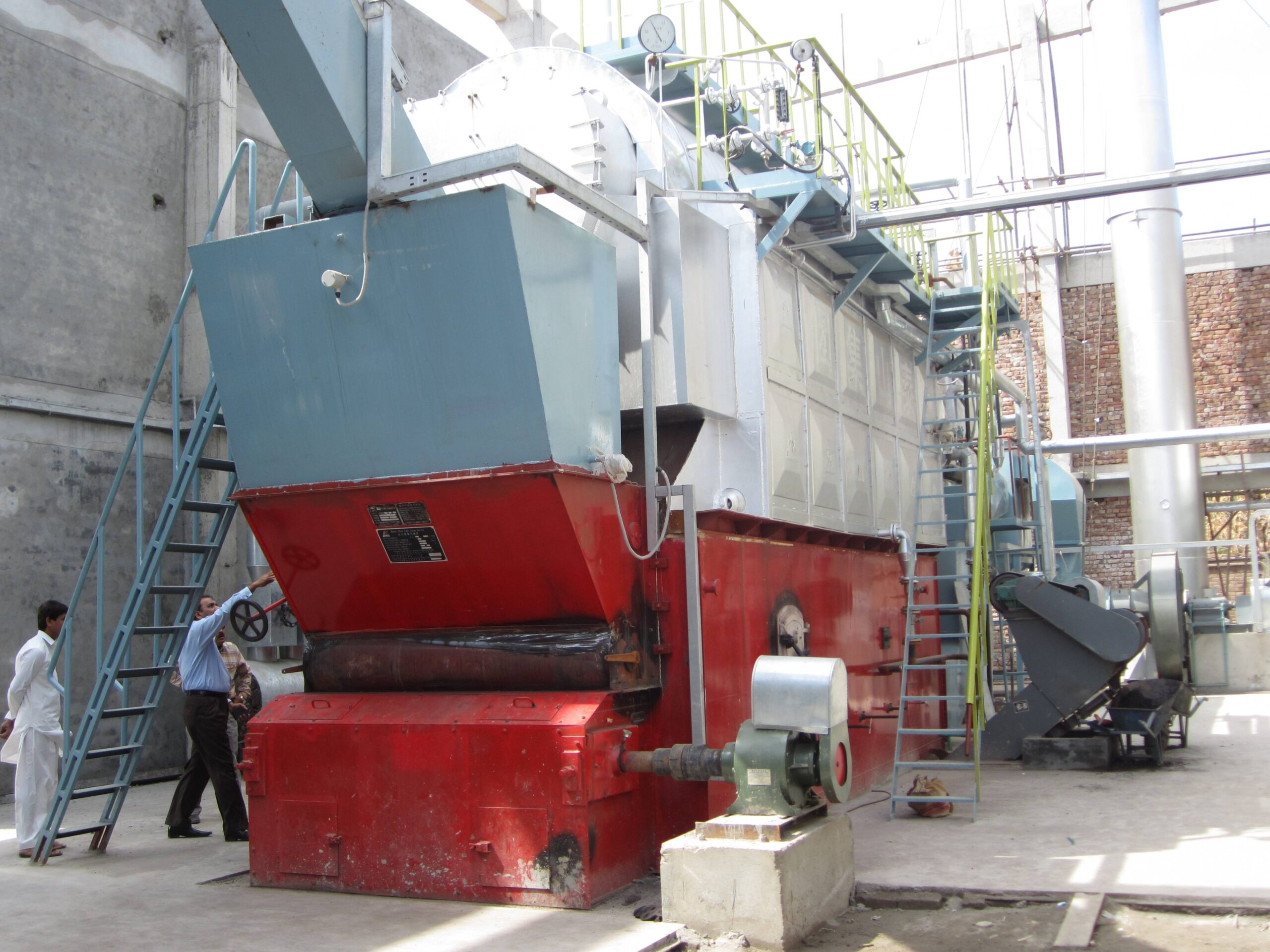
What Maintenance, Manpower, and Downtime Costs Should Be Budgeted for in a Coal-Fired Boiler System?
Operating a coal-fired boiler is not only about managing fuel—it’s also about keeping the system running safely and reliably through regular maintenance, skilled staffing, and planned downtime. Failing to budget adequately for these areas can lead to unexpected failures, extended shutdowns, and costly emergency repairs. Maintenance and manpower are ongoing needs, and downtime—planned or unplanned—can significantly impact output and revenue. A well-structured budget must account for both scheduled operational support and potential risk mitigation.
Maintenance, manpower, and downtime costs in a coal-fired boiler system should be budgeted as essential, recurring operating expenses. Maintenance includes preventive, predictive, and corrective actions such as soot blowing, descaling, tube inspection, pump repair, and emissions system upkeep. Manpower covers full-time operators, technicians, and training. Downtime costs include production losses during planned overhauls and unplanned outages. Annual budgets should allocate $100,000–$300,000+ for maintenance, $150,000–$400,000 for staffing, and $50,000–$500,000 for downtime-related losses, depending on boiler size and operation frequency.
Skimping on these categories is not saving—it’s delaying the inevitable cost of failure.
Proper budgeting for maintenance and staffing helps reduce unplanned downtime in coal boiler operations.True
Regular inspections and skilled labor reduce the frequency and duration of costly shutdowns.
🧰 Maintenance Cost Categories and Estimates
| Maintenance Task | Frequency | Annual Cost Range (USD) |
|---|---|---|
| Soot Blowing & Ash Removal | Daily/weekly | $8,000 – $25,000 |
| Tube Inspections & Cleaning | Monthly to annually | $20,000 – $60,000 |
| Burner Maintenance | Quarterly to annually | $10,000 – $30,000 |
| Pump & Motor Overhauls | Annually | $12,000 – $50,000 |
| Instrumentation Calibration | Biannually | $5,000 – $20,000 |
| Refractory Repair & Re-lining | Every 2–4 years | $30,000 – $150,000 |
| Control System Updates (PLC/SCADA) | As needed | $15,000 – $50,000 |
| Emission Control System Upkeep | Quarterly to annually | $25,000 – $80,000 |
Typical Annual Maintenance Budget: $100,000 – $300,000 for mid-sized systems (10–30 TPH)
👷 Manpower and Staffing Costs
| Staff Type | Role Description | Annual Cost per Staff (USD) |
|---|---|---|
| Boiler Operator (24/7 shift) | Control combustion, monitor instruments | $45,000 – $65,000 |
| Maintenance Technician | Perform inspections, cleaning, repairs | $35,000 – $55,000 |
| Electrical/PLC Technician | Maintain automation and alarms | $40,000 – $70,000 |
| Water Treatment Chemist | Monitor and adjust feedwater chemistry | $35,000 – $60,000 |
| Boiler Supervisor/Engineer | Oversee efficiency, safety, compliance | $65,000 – $100,000 |
Total Manpower Budget: $150,000 – $400,000+ annually, depending on staffing levels and operating hours.
Staffing costs for coal boiler operations can exceed $300,000 per year depending on shift coverage and skills required.True
Round-the-clock operation, technical maintenance, and emissions management require multiple specialized roles.
🕓 Downtime and Outage Cost Considerations
| Type of Downtime | Description | Cost Impact Estimate (USD) |
|---|---|---|
| Planned Shutdown (Annual) | Scheduled for deep maintenance | $20,000 – $100,000 (labor + lost output) |
| Unplanned Downtime | Caused by part failure, fouling, etc. | $5,000 – $50,000/day in losses |
| Emissions Compliance Delay | Failed inspection causes delay | Fines + $10,000+/day loss |
| Major Tube Failure Event | Sudden rupture with weeks of downtime | $200,000+ (repair + outage) |
A single unexpected shutdown can cost more than an entire year of preventive maintenance.
📊 Example Annual O&M Budget: 20 TPH Coal Boiler
| Cost Component | Annual Budget (USD) |
|---|---|
| Preventive Maintenance | $160,000 |
| Scheduled Downtime Costs | $45,000 |
| Manpower (Full Staffing) | $285,000 |
| Emergency Repairs Reserve | $50,000 |
| Total Annual O&M Budget | ~$540,000 |
This excludes fuel and environmental compliance, which are budgeted separately but greatly affected by maintenance quality.
🧪 Case Study: Maintenance Savings Through Proactive Strategy
Facility: Textile Plant with 15 TPH Boiler
Initial Situation:
Reactive maintenance
3 unexpected shutdowns/year
Downtime loss: $120,000/year
Solution:
Implemented scheduled tube cleaning, soot blowing
Added predictive monitoring and spare part inventory
Trained 3-person onsite team
Results:
Zero unplanned downtime
Maintenance cost: +$50,000
Downtime cost savings: $120,000
Net gain: $70,000/year
Preventive maintenance reduces total cost of ownership by lowering failure frequency and unplanned downtime.True
Even though it increases annual spending, it avoids expensive losses from emergency breakdowns.
Summary
To operate a coal-fired boiler reliably, a facility must plan and budget realistically for three interconnected cost centers: maintenance, manpower, and downtime. These are not optional—they are recurring necessities that determine whether your system operates efficiently or hemorrhages costs. With budgets ranging from $400,000 to over $1 million annually (depending on scale), they demand the same strategic attention as fuel procurement. In high-load boiler operations, failing to maintain is planning to fail—and paying the price for it.
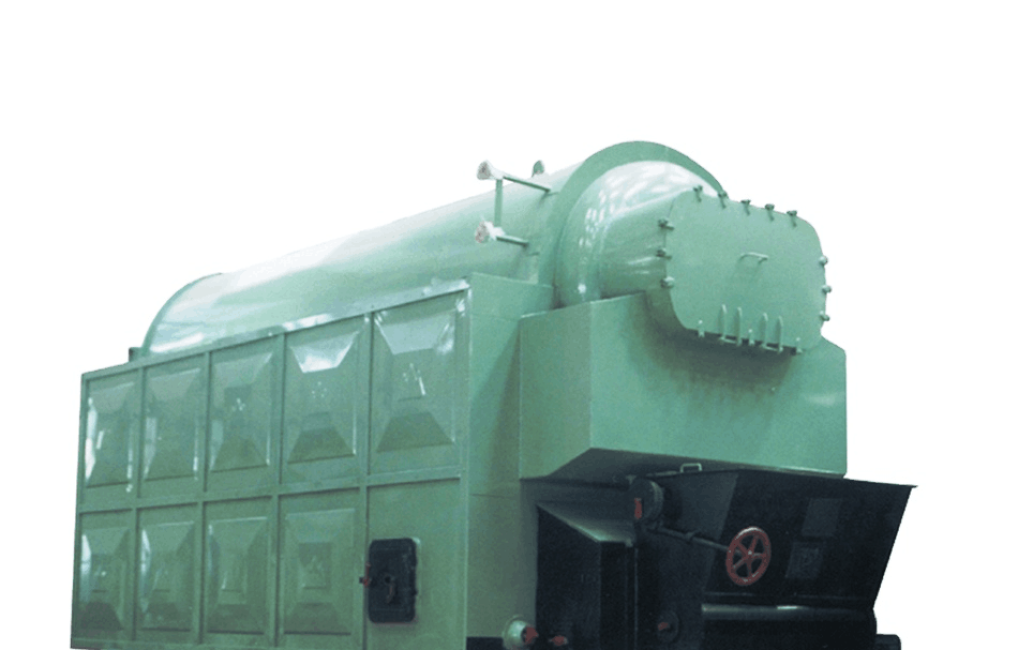
How Can Total Cost of Ownership (TCO) and ROI Be Estimated for Coal-Fired Boiler Investments?
Investing in a coal-fired boiler is a capital-intensive decision with long-term financial implications. To make an informed choice, plant owners and engineers must look beyond the initial purchase price and evaluate the full Total Cost of Ownership (TCO)—which includes fuel, maintenance, labor, emissions compliance, and downtime over the boiler’s lifespan. Equally important is calculating Return on Investment (ROI), which shows how quickly the system will pay back its cost through operational savings or thermal output benefits. TCO and ROI are essential tools for comparing different technologies, fuel options, and project configurations.
Total Cost of Ownership (TCO) is the sum of all expenses incurred over the lifecycle of a coal-fired boiler, including capital expenditure (CAPEX), recurring operating expenses (OPEX), fuel costs, maintenance, emissions compliance, labor, and decommissioning. ROI is calculated by comparing the net gains (cost savings or revenue) to the total investment. Estimating both metrics requires projecting annual costs and savings over 20–30 years and accounting for variables such as fuel prices, downtime risk, and tax incentives. A typical TCO for a 25 TPH coal boiler may exceed $40 million, with ROI break-even typically achieved in 4–7 years depending on fuel cost advantage and operational efficiency.
If you want to own it profitably, you need to plan for everything you’ll pay for.
TCO and ROI calculations are essential for evaluating the long-term value of a coal-fired boiler investment.True
They help compare total costs and returns across equipment, fuel types, and lifecycle strategies.
📊 TCO Breakdown Example: 25 TPH Coal Boiler Over 20 Years
| Cost Category | Estimated Value (USD) | % of Total TCO |
|---|---|---|
| Capital Cost (CAPEX) | $6.5 million | 15–18% |
| Fuel (Coal, 25,000 T/year) | $40–45 million | 70–75% |
| Maintenance & Repairs | $3.5 million | 7–8% |
| Labor & Operations | $4.2 million | 8–10% |
| Emissions Compliance | $2.5–4 million | 5–8% |
| Downtime Loss Reserve | $0.5–1 million | 1–2% |
| Total TCO (20-Year) | $57 – $64 million | 100% |
Even if capital investment is moderate, fuel and operation dominate long-term ownership costs.
📉 Simple TCO Formula (Non-technical version)
TCO = Initial Cost + (Annual Operating Cost × Years of Operation) + Compliance + Downtime Losses
This simplified formula gives you a 360° view of cost over time, not just up front.
💰 Estimating ROI (Return on Investment)
ROI measures how much benefit you receive from your investment compared to what you paid. For boilers, it’s often evaluated based on fuel savings vs. alternatives (like oil/gas), energy output value, or reduced downtime.
Simple ROI Formula:
ROI (%) = (Annual Cost Savings × Years) ÷ Total Investment × 100
Payback Period = Total Investment ÷ Annual Net Benefit
🧪 Case Study: ROI of Coal vs. Oil-Fired Boiler
| Parameter | Oil-Fired Boiler | Coal-Fired Boiler |
|---|---|---|
| Initial Cost | $1.2 million | $6.2 million |
| Fuel Cost/Year | $2.3 million | $1.6 million |
| Annual Fuel Savings (vs. oil) | — | $700,000 |
| Maintenance, Compliance, Labor | Slightly lower | Higher |
| Net Annual Benefit | — | $600,000 |
| Payback Period | — | ~10.3 years |
| ROI Over 20 Years | — | ~194% |
Despite a longer payback, coal provides strong ROI in fuel-intensive operations—especially where oil is volatile or expensive.
ROI for coal-fired boilers depends heavily on fuel savings compared to alternatives like oil or gas.True
In high-load applications, the lower cost of coal can result in substantial net savings over time.
📋 Steps to Estimate TCO and ROI
| Step | Action |
|---|---|
| 1. Define Boiler Specs | Capacity, pressure, hours/year |
| 2. Calculate Capex | Boiler, fuel system, emissions equipment |
| 3. Estimate Opex | Fuel, maintenance, labor, chemicals |
| 4. Model Emissions Costs | Taxes, FGD/ESP O&M, monitoring |
| 5. Include Downtime Estimates | Based on historical data or risk model |
| 6. Project Over 20–30 Years | Include inflation, fuel escalation |
| 7. Compare With Alternatives | Gas/oil-fired boilers, renewables |
| 8. Calculate ROI and Payback | Based on cost savings or output value |
Use financial modeling tools or Excel to simulate scenarios and compare technologies side-by-side.
🔁 Factors That Affect TCO/ROI Significantly
| Factor | Effect on TCO and ROI |
|---|---|
| Fuel Price Volatility | Higher volatility = higher financial risk |
| Emissions Tax/Compliance | Can increase TCO by 10–30% |
| Efficiency Improvements | Faster payback, better ROI |
| Downtime Frequency | Adds hidden cost to TCO |
| Local Subsidies or Credits | May improve ROI substantially |
TCO modeling helps identify hidden costs that affect long-term profitability.True
It captures costs like emissions penalties and downtime losses that don't appear in initial project estimates.
Summary
Estimating Total Cost of Ownership and ROI for coal-fired boiler systems is essential to making informed, financially sound investment decisions. While initial capital costs are significant, it’s the cumulative fuel, labor, maintenance, and emissions expenses that shape the system’s economic profile over decades. A complete TCO analysis reveals the true long-term cost, while ROI calculations show whether and when your investment will pay back. For industrial-scale energy users, accurate TCO and ROI modeling isn’t optional—it’s the foundation of sustainable profitability.
🔍 Conclusion
While the initial cost of a coal-fired boiler may seem lower compared to other systems, the long-term financial picture tells a different story. Fuel storage, ash handling, emissions treatment, and labor can drive up operational costs over time. A comprehensive life-cycle cost assessment is the only way to ensure the investment aligns with your operational and environmental goals. With increasing regulatory scrutiny, operators must also weigh the risk of future compliance costs and potential retrofits.
📞 Contact Us
💡 Looking for clarity on the real cost of a coal-fired boiler system? Our engineering team offers TCO modeling, regulatory impact analysis, and ROI forecasting to support smarter investments.
🔹 Talk to us today and make your next boiler investment cost-effective, compliant, and future-ready. 🏭🪨💰
FAQ
What is the average upfront cost of an industrial coal-fired boiler?
Upfront costs typically range from $100,000 to $1 million depending on size, capacity, pressure rating, and compliance features. Installation adds $50,000–$300,000, covering civil works, fuel handling systems, emission controls, and labor.
What are the long-term fuel costs for coal-fired boilers?
Coal is a relatively low-cost fuel, averaging $40–$60 per ton. However, fuel costs depend on boiler efficiency and coal type. A mid-size industrial boiler consuming ~5,000 tons/year could incur $200,000–$300,000 annually in fuel costs.
How much does ongoing maintenance cost?
Annual maintenance costs range from 3–6% of the capital cost. Over a 20–25 year lifespan, total maintenance (including ash handling, tube cleaning, and refractory replacement) can exceed $300,000–$700,000.
What indirect or hidden costs should be considered?
Emissions control equipment (e.g., ESP, FGD systems)
Compliance costs for environmental permits and reporting
Coal storage, handling, and disposal infrastructure
Downtime-related productivity losses
Insurance and safety upgrades
How do coal-fired boilers compare in lifecycle cost?
While coal boilers have a lower fuel cost than oil or gas options, they involve higher capital costs, more complex infrastructure, and greater environmental compliance expenses. Their total cost of ownership (TCO) depends heavily on fuel availability, emissions regulation, and operational scale.
References
Coal-Fired Boiler Cost Estimation – https://www.energy.gov
Global Coal Prices and Forecasts – https://www.eia.gov
Boiler Fuel Cost Analysis and Trends – https://www.researchgate.net
Installation and Operation Cost of Industrial Boilers – https://www.sciencedirect.com
Coal Handling and Ash Disposal Costs – https://www.epa.gov
Emission Compliance for Coal Boilers – https://www.bioenergyconsult.com
Industrial Boiler Maintenance Best Practices – https://www.mdpi.com
Comparing Fuel Options in Industrial Boilers – https://www.energysavingtrust.org.uk
Lifecycle Cost Modeling for Thermal Power Systems – https://www.iea.org
Boiler Operation and Maintenance Economics – https://www.asme.org

